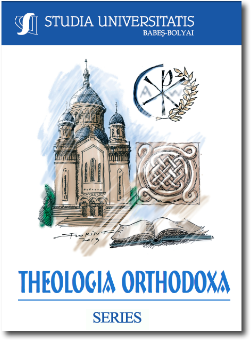NARRATING THE HOLY MAN IN LATE ANTIQUITY: THE CASE OF SHENOUTE OF ATRIPE
NARRATING THE HOLY MAN IN LATE ANTIQUITY: THE CASE OF SHENOUTE OF ATRIPE
Author(s): Daniel LemeniSubject(s): Christian Theology and Religion, History of Church(es)
Published by: Studia Universitatis Babes-Bolyai
Keywords: holy man; spiritual authority; monasticism; holiness; Late Antiquity; Shenoute of Atripe.
Summary/Abstract: This paper generally explores the central role of holy men in Late Antiquity, and especially the case of Shenoute of Atripe, an extraordinary Egyptian monk from the first half of the fifth century. Our major premise is that in the Christian communities of Late Antiquity, the saint (the holy man so well studied by Peter Brown) played a role comparable to that of a prophet, seen as the axis of the community. In other words, the charismatic holy man transformed his territory into a sacred space and created a new site for the interrelation between society and the sacred. Moreover, all those blessed with charisma served as a focus of divine power and delineated a new territory of grace. This process can be described as a kind of “spatialization of charisma”. Briefly, every dwelling place of a holy man became a sacred site and a locus of personal salvation. For Shenoute, the body is the site of redemptive transformation. It is also the site for theological development, social control, and the construction of Christian identity. Therefore, our conclusion is that the holiness of this figure becomes a significant social factor in late antique Mediterranean world. The visibility of holiness – the fact that holy man is observed and narrated – plays a central role in understanding the cultural significance of this figure in a changing world.
Journal: Studia Universitatis Babes-Bolyai - Theologia Orthodoxa
- Issue Year: LXI/2016
- Issue No: 1
- Page Range: 133-145
- Page Count: 13
- Language: English

